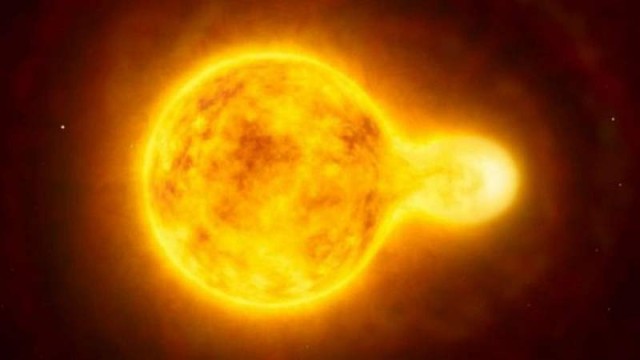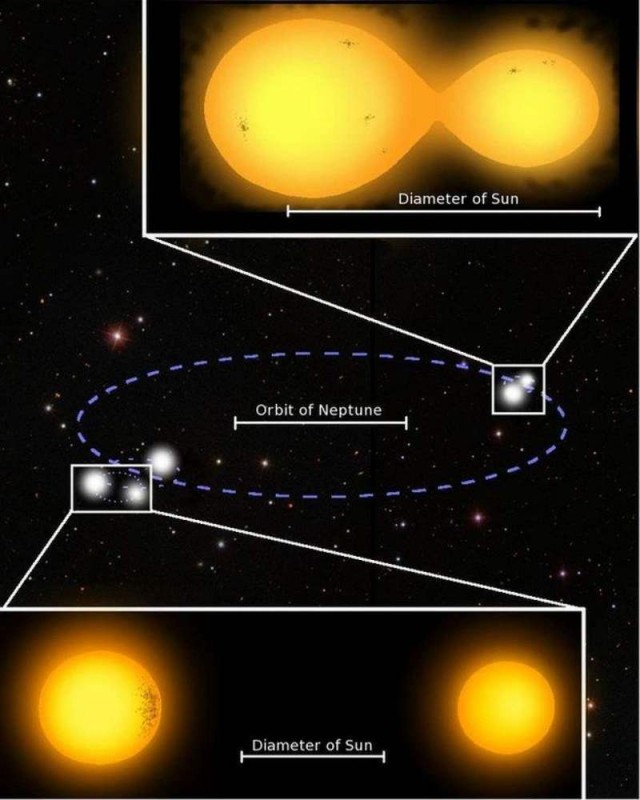Astronomers discovered a five-star Solar System, made of two binary stars and a fifth star all orbiting about each other.
Images credit ESO
The ‘doubly eclipsing quintuple low-mass star system,’ as the call it, is 250 light years from Earth and is the first of its kind discovered.
Astronomers believe that there will be probably planets around the stars, with almost never-ending daylight.
They made the discovery by using a set of relatively low-cost cameras, the SuperWASP (Wide Angle Search for Planets), in the Canary Islands and South Africa.
According to Cornell University publication:
“Our discovery of 1SWASP J093010.78+533859.5 as a probable doubly eclipsing quadruple system containing a contact binary with P~0.23 d and a detached binary with P~1.31 d was announced in 2013. Subsequently Koo et al. confirmed the detached binary spectroscopically and identified a fifth set of static spectral lines at its location, corresponding to a further non-eclipsing component of the system. Here we present new spectroscopic and photometric observations, allowing confirmation of the contact binary and improved modelling of all four eclipsing components. The detached binary is found to contain components of masses 0.837(8) and 0.674(7) M_sol, with radii of 0.832(18) and 0.669(18) R_sol and effective temperatures of 5185(-20,+25) and 4325(-15,+20) K respectively.”
via Phys.org
source Cornell University







Lately, it seems, there have been lots of missing matter “discovered” i.e. “millions of hidden black holes per galaxy, and hundreds of millions of rogue planets and red or dwarf stars that are undetectable. Has anyone considered this missing mass part of the reason mathematical calculations are not coming out right and that the reason might not be some mythical dark matter?